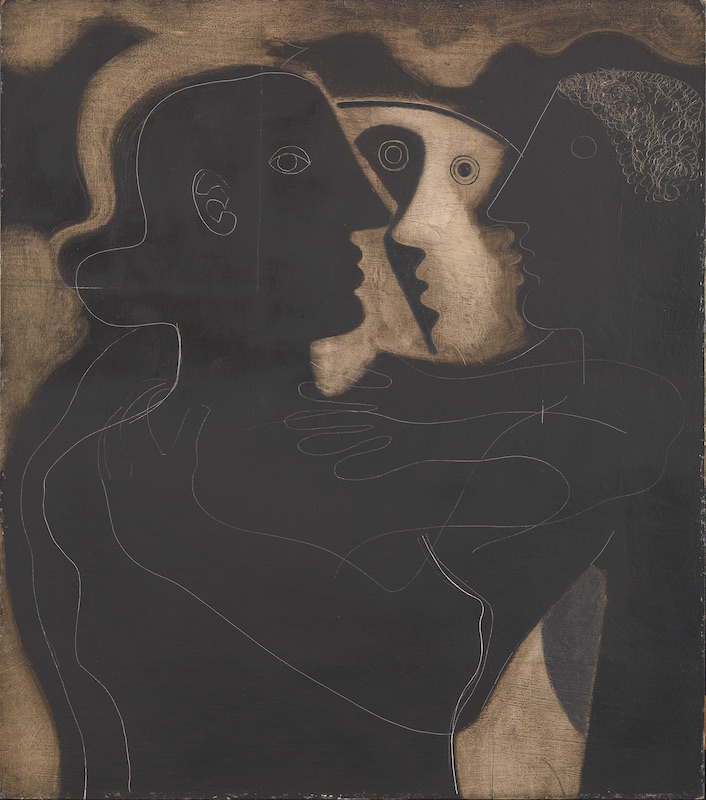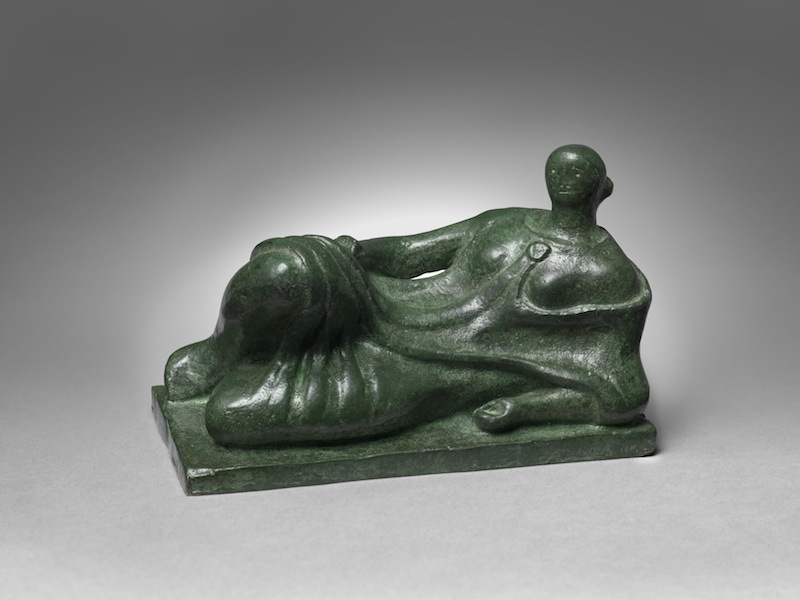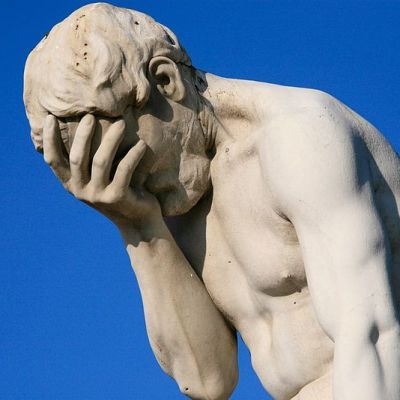If the ‘return to order’ following the First World War was a retreat from the chaos and unrelenting modernity of the pre-war years, it was by no means a surrender. The war memorials that were built across Britain during the 1920s – and which serve as the notional starting point for ‘The Mythic Method: Classicism in British Art 1920–50’ at Pallant House Gallery – took refuge in the classical lexicon, but artists like Francis Derwent Wood used its expressive potential to construct a subversive narrative alongside the dignified and respectful commemoration of the dead.
Particularly in France, the renewed interest in the traditions of the ancient world was seen by some as a betrayal of modernist values; Picasso’s neoclassical-inspired portraits were, for example, a baffling desertion of cubism. It is a view that has persisted to some extent in art-historical writing, but in the huge range of material on display here, from humorous posters advertising Shell oil, to reimaginings of Greek mythology as in John Armstrong’s highly decorative Design for the Rape of Persephone (1927), it is clear that classicism was a way of reinvigorating and refreshing modernist experimentation.
1933 (St Rémy, Provence) (1933), Ben Nicholson. Image courtesy of Tate; © Angela Verren Taunt. All rights reserved, DACS 2016

In Ben Nicholson’s double portrait of himself and Barbara Hepworth, 1933 (St-Remy, Provence), the sharp delineations of classical portraiture confer monumentality through the simplification of form, producing an emotionally intense encounter through flattened, ambiguous space. Edward Burra’s Arcadia, 1928–29, subverts a traditional genre in a modern day fête champêtre, with figures in absurdly short togas intermingling with nude statuary to suggest the decadence of the upper classes and to poke fun at their country house parties.
The classical tradition was equally well-suited to the treatment of taboo subjects. With its themes of impossible, unrequited love and allusions to homosexuality, Glyn Philpot’s Echo and Narcissus, c. 1931 allowed an exploration of homosexuality in veiled terms. Philpot’s composition emphasised the physical and emotional separateness of the two figures, which were cast as two discrete pieces.
Design for the Rape of Persephone (1927), John Armstrong. © Estate of John Armstrong/Bridgeman Images

The uncanny, with its links to surrealism, was an important strand of modernism, and Giorgio de Chirico’s metaphysical pictures, exhibited in London in 1928 and 1931, were hugely influential in Britain. Classical elements give weight and physical presence to objects: in Coquillages (Shells), 1926, by the former Vorticist Edward Wadsworth, objects, including an antique column, are placed in an apparently meaningful arrangement to give the painting its dreamlike sense of timelessness and mystery.
Despite playing with ideas that were at the forefront of modernist experimentation, Coquillages is painted in egg tempera, a medium that was largely abandoned after the early Renaissance when it was replaced by oil. A low-key but significant tendency in the early 20th century, when artists at the Slade School – like Stanley Spencer and Winifred Knights – looked back to the early Renaissance to provide precedents for modern monumental painting, the Tempera Revival gained popularity in the 1920s. Like the ‘return to order’ itself, it points to the contradictory and often decidedly non-linear development of art history.
Santa Maria in Araccoeli (1938–39), Edward Burra. © Estate of the Artist c/o Lefevre Fine Art Ltd, London

Motivated principally by nostalgia, and a desire to restore craftsmanship to painting, the Tempera Revival had a curious affinity with modernist aims, and for Wadsworth and others, the small brushstrokes and fast-drying paint appealed to the conception of a painting as a carefully planned construction project.
As a versatile tool for artistic expression, classicism was ubiquitous in the 1930s, with ideals of female beauty borrowing heavily from Renaissance and neoclassical precedents. Here, most notably, is Gerald Leslie Brockhurst’s portrait of Wallis, Duchess of Windsor (1939) as the Mona Lisa, while Madame Yevonde’s photographs of guests dressed up as figures from Greek mythology at the 1935 ‘Olympian Party’ mix neoclassical and surrealist influences.
Reclining Figure (1945), Henry Moore. Courtesy Osborne Samuel; © Reproduced by permission of The Henry Moore Foundation

Such ubiquity had darker ramifications of course, and the appropriation of classical imagery by the fascists highlights how flimsy the divide can be between mainstream tastes and dangerous extremism – an observation that gives the exhibition special force in today’s political climate. Even so, the final rooms show the resilience of the classical lexicon, with Henry Moore drawing parallels between Londoners sheltering from the Blitz and the draped reclining figures of ancient Greece. Madame Yevonde’s Crisis, 1938, and John Armstrong’s Pro Patria, 1938, meanwhile, successfully reclaim classical imagery as a metaphor for European civilisation under threat.
‘The Mythic Method: Classicism in British Art 1920–1950’ is at Pallant House Gallery, Chichester, until 19 February 2017.



